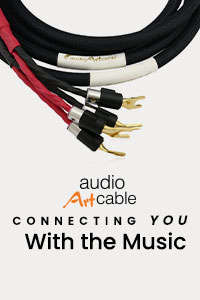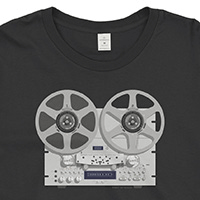Ortofon MCA-76 Head Amplifier
 Back when I was selling Technics SL1200s and Shure V-15 cartridges by the truck load, on the brink of becoming an major obsessive audiophile, our shop received the latest and greatest from Ortofon – their MC20 moving coil cartridge and the accompanying MCA-76 head amplifier. If memory serves me correctly, the cartridge was about 300 bucks and the MCA-76 about twice that. Big bucks to step up from that Shure indeed. I was driving a bright green Saab 99 that I barely had that much invested in, but I had to have it.
Back when I was selling Technics SL1200s and Shure V-15 cartridges by the truck load, on the brink of becoming an major obsessive audiophile, our shop received the latest and greatest from Ortofon – their MC20 moving coil cartridge and the accompanying MCA-76 head amplifier. If memory serves me correctly, the cartridge was about 300 bucks and the MCA-76 about twice that. Big bucks to step up from that Shure indeed. I was driving a bright green Saab 99 that I barely had that much invested in, but I had to have it.
The Ortofon cartridge was a major step up in analog playback, and having just discovered Stereophile and The Absolute Sound, I was crazed with an expanded vocabulary that included words like “soundstage” and “transparency…” Yes, I was hooked on analog madness in a major way. Of course, after about two weeks of listening to these new toys, the Technics was no longer good enough and an Oracle Delphi Mk. 2 would take its place, but that’s another story for another day.
Today, the MC20 continues as the MC20 Super, reviewed here, but the MCA-76 is long discontinued, however it is readily available on the secondary market. And a new old stock MC20 can be purchased for about $100-$200, but vary widely in quality. The same goes for the MCA-76; these can be had for as little as $100 (what I paid for this example) up to as high as $600. Six big ones is probably a trifle optimistic, considering that the thirty plus year old electrolytic capacitors in the power supply really need to be replaced by now and how insane you want to get will that could easily add a few hundred more to the eventual price.

Staffer Jerold O’Brien who has a penchant for vintage gear is already champing at the bit to give the MCA-76 an overhaul, add film capacitors, better RCA jacks and a healthy dose of Cardas wire to this vintage jewel, so we may revisit this on the Analogaholic section of our website.
To be as true to my memories as possible, a Technics SL-1200 was borrowed from O’Brien and I still had a pristine example of the MC20 from our review of the MC20 Super. Once set up at the necessary 1.7gram tracking force, listening could begin in earnest. This cartridge produces a miniscule output of .07 (mk1) to .09mv (mk2), so the MCA-76 has a correspondingly high gain to match, making it a less than optimum partner for many of todays MC cartridges in the .4 – .6mv range without overload. There are no adjustments for gain or loading with the MCA-76; audiophiles did not have the plethora of MC cartridges that they enjoy today.
With analog, it’s always worth giving even the wackiest combination a go, even if the specs suggest otherwise and the MCA-76 was not a bad dance partner with the Dynavector Karat 17D3, (.3mv), even though it has a DC resistance of 38 ohms, where the MC20 is only 3. Ortofon’s SPU Classic GM E cartridge spans the gap between new and old, with a DC resistance of 6 ohms and an output of only .2mv – an excellent combination.

But enough stalling, how did our visit down memory lane with the MC20 go? Quite well, actually. Listening to Mobile Fidelity’s version of Los Lobos’ Kiko proved enchanting. The swinging groove of “That Train Doesn’t Stop Here,” had a wide and vivid sounstage, with the vocals large, in charge and up front, as they are with a modern cartridge. Moving the MC20 from the Technics to a recently refurbished Thorens TD-125/SME 3009 combination made for even better low level detail retrieval and a warmer overall sound. The rest of my listening sessions would be with this setup and the MC20 has remained on the Thorens.
Even with the old power supply capacitors, the MCA-76 renders a fairly quiet background, though not as inky black as you’d expect from something like a Lehmann Black Cube. For now, the jury is out until we upgrade the caps.
Do you need one? Probably not, unless you can get a major deal and just feel like taking that test drive again, but if you are a careful shopper that can probably be arranged. The only real exception to this rule would be to pair it up with an SPU on the cheap until you find the $$ for a better MC phonostage. These two have a synergy that can not be denied.
Either way, it’s always a great time taking a look at legendary gear that changed our perceptions of what analog is capable of, and the solid engineering behind these two pieces from Ortofon continue to this day.
– Jeff Dorgay





